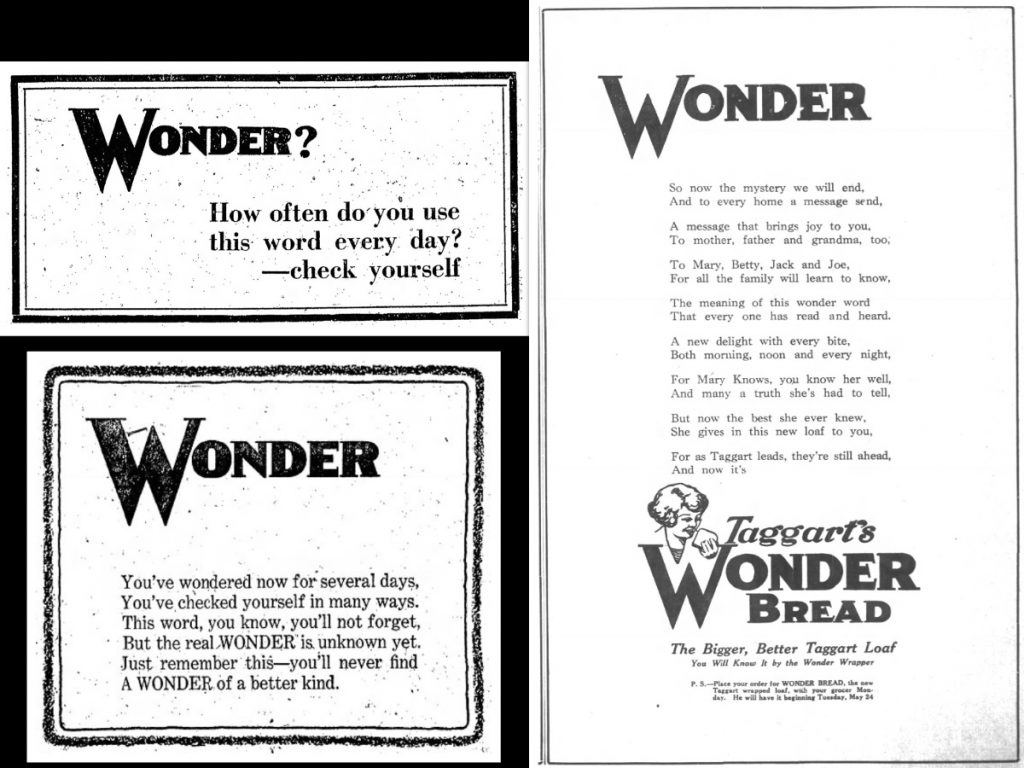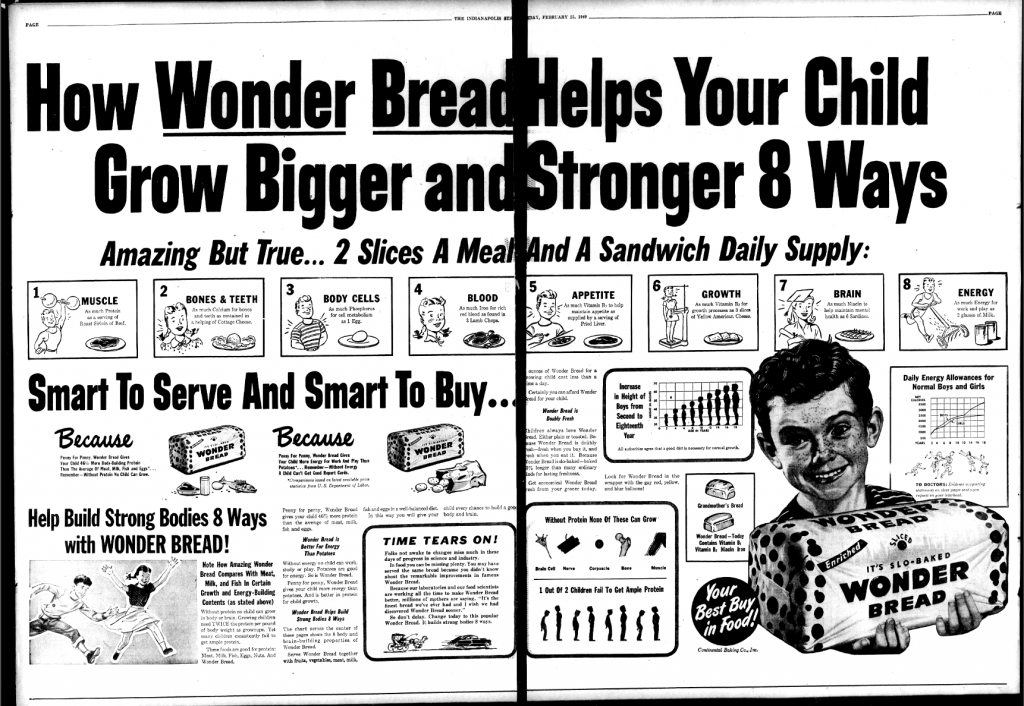Taggart Baking Company debuted a new bread with a mysterious advertisement that first showed up in on May 19, 1921. The small display ad asked a cryptic question: “WONDER? How often do you use this word every day? Check yourself.”

A follow-up advertisement ran two days later. Although this teaser shed no more light on either the product that was being promoted or the company that was selling it, readers were promised that a “real WONDER” would soon be unveiled and that they “would never find a WONDER of a better kind.”
All this contemplation about the word “WONDER” finally ceased a few days later when the ran a large advertisement in the Star announcing the arrival of its new Wonder Bread. While previous bakery advertising campaigns had focused on the “homemade” taste of mass-manufactured bread, the Taggart Baking Company now touted the fact that Wonder Bread was unlike anything that could be baked at home.
International balloon races held at the inspired the bread’s name and its colorful package design. Elmer Cline, the Taggart vice president in charge of the marketing plans for the new bread, was attending an international balloon race at the speedway in 1920 when he came up with the idea. The races had filled him with “wonder,” and he thought that a white wrapper—emphasizing the product’s cleanliness—dotted with red, white, and yellow balloons created the perfect branding for the product. The first loaves of Wonder Bread appeared on Indianapolis grocers’ shelves on May 24, 1921, packaged in what became the product’s iconic wrapper.
Weighing a pound and a half, Wonder Bread featured an even texture, soft crusts, and a strange resilience that kept it from crumbling even when smeared with peanut butter and grasped by toddlers’ hands. The Taggart Baking Company’s used the Sévigné automatic bread-wrapping machine, first developed by Nashua Corporation in New Hampshire in 1915, to package Wonder Bread. It could wrap up to 3,000 loaves of bread per hour. Wonder Bread advertisements stated that the machine ensured that each loaf of Wonder Bread was perfectly wrapped, without the need for greasy, heavy, waxed paper.

Four years after it was introduced to Indianapolis residents, Wonder Bread became a national brand when the Taggart Baking Company was purchased by Continental Baking Company. Then in 1930, Taggart became one of the first baking companies to take advantage of a device invented in 1927 that sliced and wrapped bread in one process. Wonder Bread was one of the first commercially baked loaves to be sold presliced, inspiring the phrase “the greatest thing since sliced bread.”
Wonder Bread was manufactured in the heart of downtown Indianapolis until 1957 when Continental Baking Company opened its new plant at 2929 N. Shadeland. On August 25, 1971, the birthplace of Wonder Bread fell to the wrecking ball when the downtown bakery at the corner of Market and New Jersey streets was demolished to make way for construction of .
The Wonder Bread brand was bought and sold several times after Alexander L. Taggart trademarked it in 1921. Wonder Bread continued to be baked at the Shadeland bakery until 2012, when the brand was acquired by Flowers Foods, a nationwide bakery chain based out of Thomasville, Georgia. Its owner, Interstate Baking Company, went bankrupt, and the production of Wonder Bread ceased.

Help improve this entry
Contribute information, offer corrections, suggest images.
You can also recommend new entries related to this topic.

